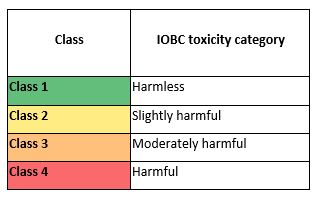- Home
- Knowledge library
- Database of insecticides and their effect on natural enemies
Database of insecticides and their effect on natural enemies
What are the effects of synthetic chemical pesticides on beneficial insects? Our SCEPTREplus project has created a new database to show the impact of different active ingredients on natural enemies
Overview
An important element of any integrated pest management strategy is conserving the natural enemies of your pests.
Some pesticides, particularly older insecticides, aren’t specific in what they target and can kill beneficial insects or spiders indiscriminately.
This database lists the effects of synthetic chemical insecticides and treatments on natural enemies.
Download the Insecticides Effects on Natural Enemies database
Please note, the database can only be opened in ‘read only’ mode. We recommend you bookmark this page and download the database when you need to use it. This will ensure you always have the most up-to-date version.
How to use the ‘Insecticides Effects on Natural Enemies’ database
The information in this database is based on International Organisation for Biological Control (IOBC) data which categorises pesticides into four classes. The classification depends on the level of mortality it causes in natural enemies.
The class gives some indication of the overall ‘harmfulness’ of an active ingredient to natural enemy species. See the table below for further information

You can filter the database to easily sort the information by:
- Active ingredient
- Product
- Test species
- Species group
- Type of test
- IOBC toxicity class
Please note: Interpretation of the information contained in the database depends greatly on the type of test carried out, the test species, the formulation of products and the dose(s) that were tested. These factors should be considered carefully when using the database to inform the use of insecticides in the field. Each database entry has a specific reference that can be consulted for further details.

How do insecticides impact natural enemies on my crops? Download the database to find out
Which active ingredients are included in the Insecticides Effects on Natural Enemies database?
The database contains 44 active ingredients. 38 are authorised (as of 1 March 2020) for outdoor use on at least one crop in the UK. An additional six insecticides may be authorised for outdoor use at some stage in the UK.
The main active ingredients included in the database are:
- 1A Carbamates
- 1B Organophosphates
- 3A Pyrethroids and pyrethrins
- 4A Neonicotinoids
- 4B Sulfoximines and 4C Butenolides
- 5A Spinosyns
- 7C Juvenile hormone mimics (pyriproxyfen)
- 10A Mite growth inhibitors affecting chitin synthase 1 (CHS1) (clofentezine)
- 11A Bacillus thuringiensis
- 15 Benzoylureas
- 18 Diacylhydrazines
- 20B Acequinocyl and 20A Mitochondrial complex (III) electron transport inhibitors (METI)
- 23 Tetronic and tetramic acid derivatives
- 28 Diamides
- 29 Flonicamid
- 31 Granuloviruses
The database was compiled by University of Warwick as part of our SCEPTREplus programme.
Further information
How has the data been compiled and what is included?
Read a summary of the impact on natural enemies by different active ingredients from the database
Find out more about our SCEPTREplus trials to secure novel and alternative plant protection products


